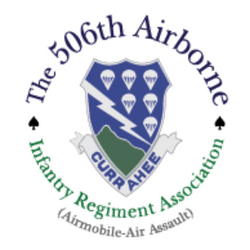construction of the a/1
In April 1971, Alpha Company, 1st Battalion, 506th Infantry (Airmobile) was operating out of Camp Evans in northern I Corps, Republic of South Vietnam. The monsoons were over, so it was hot and humid. After having served as leader of 1st Platoon, I was the senior lieutenant in the company and had been appointed Company Executive Officer. Most of the company was in the field, so I was in charge of a small headquarters section at Camp Evans, and my first job that day was to greet and brief our new Company Commander.
CPT Jodie Glore was a West Point graduate and ready for command. He listened to my briefing and then gave me a few orders, the last of which was that when he returned from the field, he wanted to see a memorial to the KIA of Alpha Company in front of the Orderly Room.
Camp Evans wasn't much, and the area around Alpha Company was even less. All that was there was a collection of Sea Huts and a dirt company street. What we did have was good soldiers running the Company HQ. They were all combat veteans who had served their time in the bush. These men did a great deal with very little, so I turned to them for ideas and help in order to complete my task.
SGT Ken Parr was the Mail Clerk, and it was he who came up with the design and actually built the monument. Ken began working on the monument on April 10. First, he located some bags of cement that had been sitting outside in the weather for some time. They were solid as a rock, but that did not stop SGT Parr. He cut the bags open, sat down, and started to pound on the contents with a hammer. Soon he had large chunks, then small pieces, and finally, cement. Next, he made a form using scraps of plywood and wood from 105mm artillery round boxes. Some rebar was located, and it was placed into the form, protruding a few inches from the top. This 5-foot-long, 8-inch square shaft with the rebar sticking out the top would form the base of the monument. SGT Parr mixed the cement with water and sand. He then filled the form to the top, leaving the last few inches of rebar exposed.
Using the same methods, SGT Parr created a form for the top of the base. The form was approximately 18 inches wides by 36 inches long, with bevelled edges. The two pieces were put together, with the rebar from the base going into and holding the top tablet in place. After the concrete dried and the forms were removed, we were left with a monument that had a tablet mounted on a slight angle to the shaft.
While SGT Parr was working on the monument, the Company Clerk, SGT Ray Sowinski, checked every Morning Report and created a list of soldiers who had been killed in action. I took this list to our little PX, where there was an engraving machine that was used to personalize Zippo lighters. I had a 1-inch by 3-inch piece of brass engraved with the Rank, Name, and Date of Death for each of these soldiers. In addition, I had a 7-inch by 14-inch piece of brass engraved with a statement expressing what it meant to be a United States Army soldier who had given his life for his country.
A hole was dug in front of the Orderly Room, and a wall of 105mm ammo crates painted olive drab was built behind this hole. We placed the monument into the hole and ringed it with a single row of sandbags. Inside this row of sandbags, we covered the ground with pure white beach sand. On the tablet was attached, from top to bottom, a CIB, the 7x14-inch engraved brass plaque, a 101st Airborne Crest, and a small brass plaque for each soldier who was killed in action.
As time passed, more names were added to the monument, and it was still there when I left Vietnam. As I think about that monument today, a few elements of it come to mind . . . mostly the names on the tablet and the wall the monument stood in front of. Because of the names and the wall, it reminds me a little of something that was built in Washington, DC many years later.
